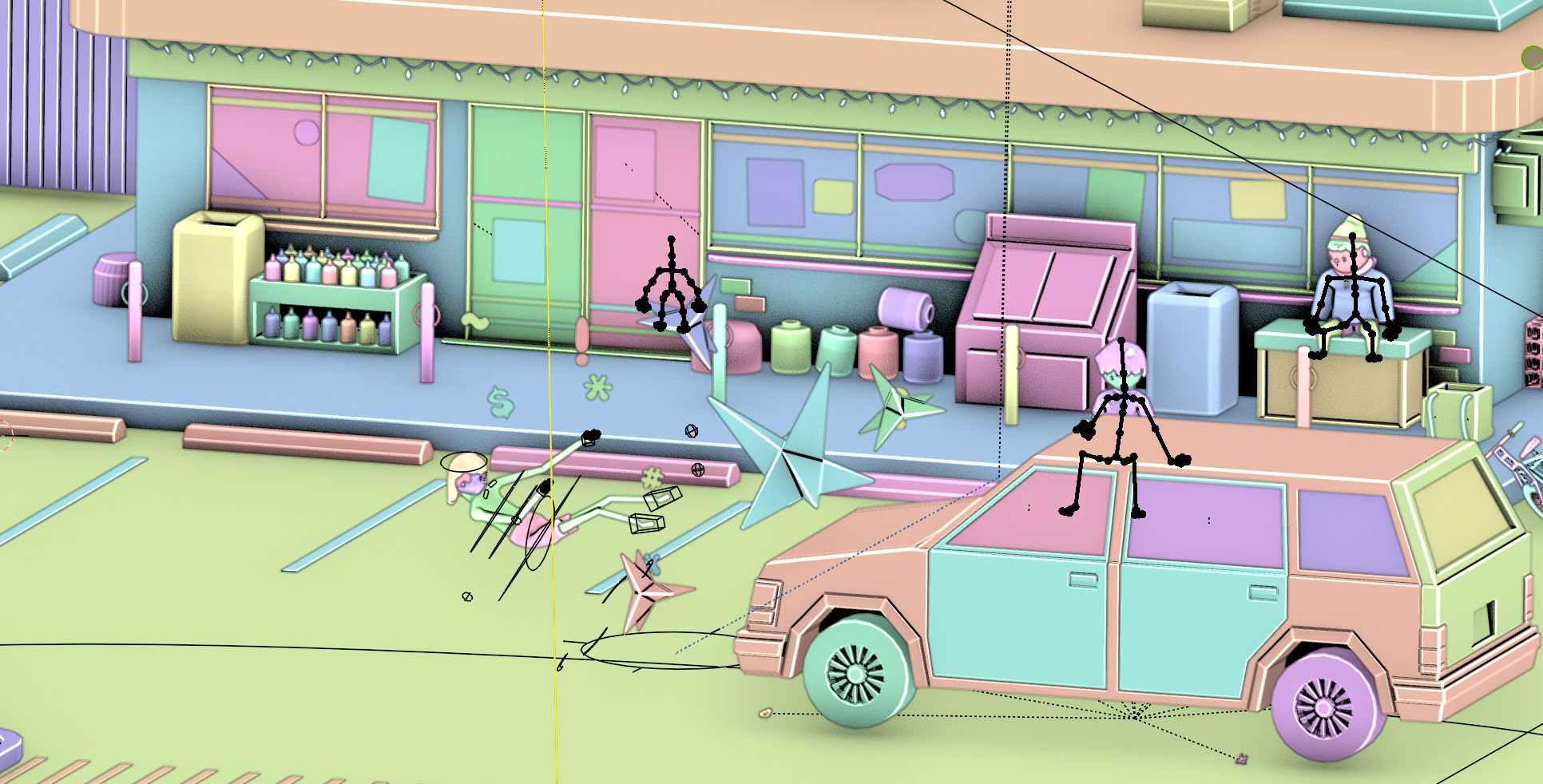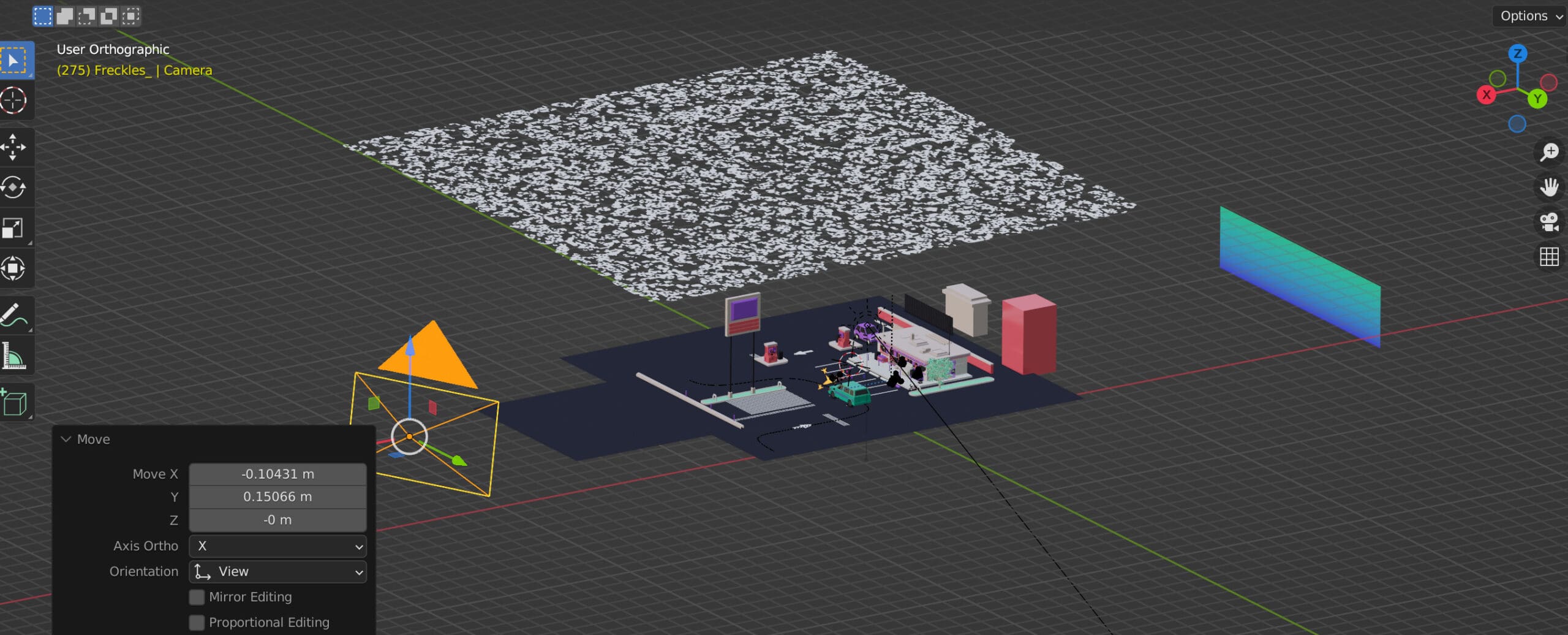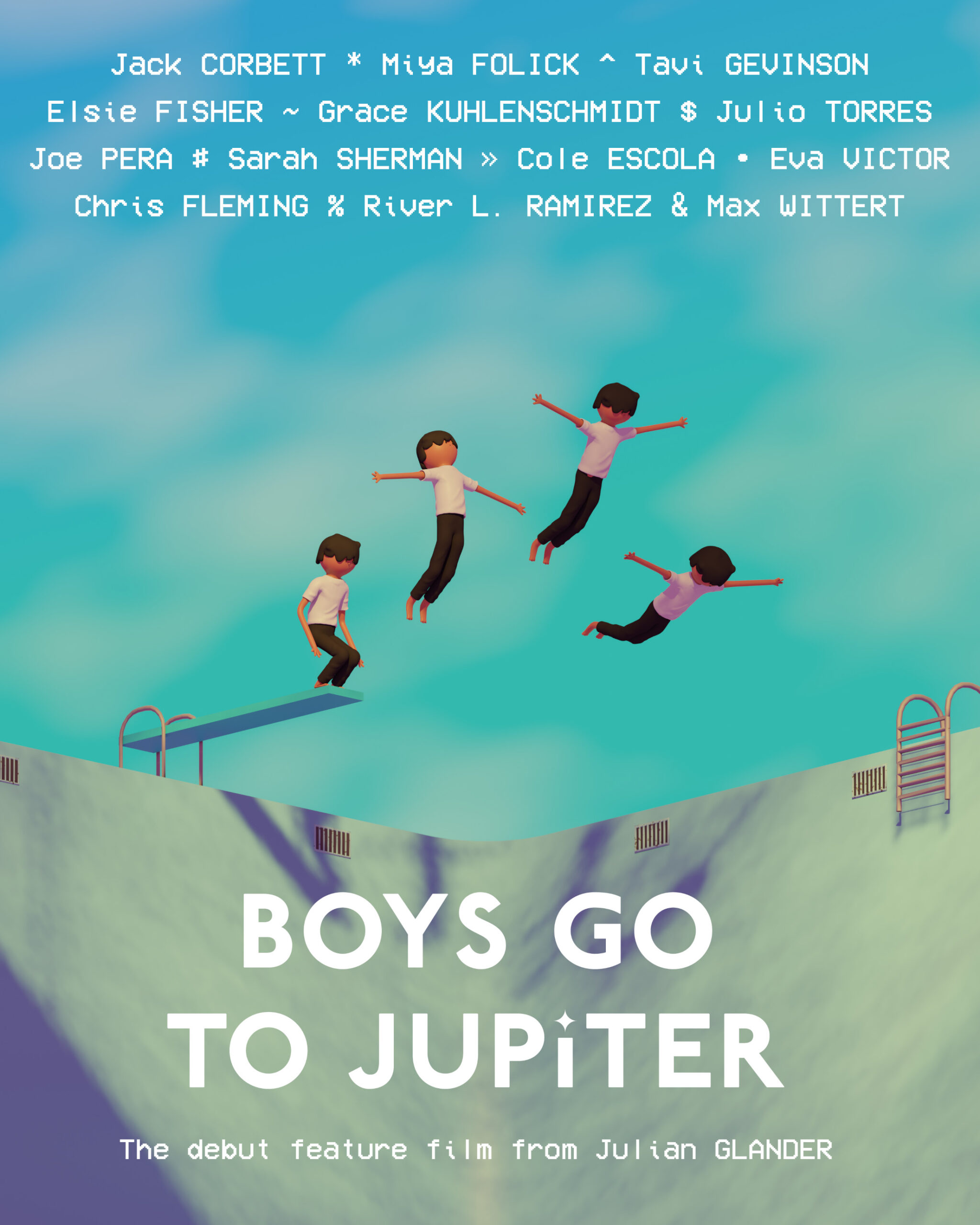

Indie CG Artist Julian Glander Shares An Early Look At His Debut Feature ‘Boys Go To Jupiter’ – Exclusive
Independently produced American animated features are a precious thing, so we’re thrilled to offer an exclusive first look at Boys Go to Jupiter, the self-produced debut feature from Pittsburgh-based indie superstar Julian Glander.
Glander previously helmed projects for Adult Swim, Cartoon Network, HBO Max, and Disney, created the cult video game ART SQOOL, contributed cg artwork to The New York Times and The New Yorker, and had an extraordinarily memorable appearance on Jeopardy, where he sang the alphabet in reverse, phonetically. Glander also made the delightful experimental short film Plant Room with fellow indie filmmaker Jeron Braxton, who is currently working on his own feature debut.
Boys Go to Jupiter is animated entirely in Blender and billed as a surreal, animated coming-of-age story told using the signature style and color palette that Glander has built his career on. In addition to directing, Glander is self-financing the film, which is executive-produced by Peisin Yang Lazo.

The film unspools in Florida amidst the gloom that accompanies the day after Christmas. There, Billy 5000, an aimless teenager content to waste his potential and fill his days working as a delivery driver, is ripped from an easy routine by fate. After being tasked with caring for a mysterious egg from another world, things spiral out of control, and Billy is forced to make seismic decisions about life, love, and money.
Boys Go to Jupiter was mainly a two-person endeavor shared by Glander and Lazo. Speaking with Cartoon Brew, Glander explained:
Each of us did the jobs of 100 people. I have no complaints – it’s been a lot of work, but it feels really good to make a movie independently. To not have meetings about everything and really own every creative decision.
Although the two did the brunt of the heavy lifting for the film, they did have some important help along the way. Fellow Pittsbugh-based animator Nate Dibert worked on the film for a few months as a character animator, and Glander convinced his idol, Jordan Speer, to contribute a few seconds of animation.
This being Glander’s debut feature, we asked him how he has had to adapt his workflow to accommodate such an ambitious project.
I finally embraced organization and time management. With an illustration or even a short animation, you can pretty much just push through it without planning, but obviously, if you do that on a feature, it all falls apart. My to-do list for the last stage of revisions had 500 notes on it, and I tackled 20 a day for a month. That might be the secret to a big project: taking that big-picture vision and cutting it up into tiny, digestible pieces.

Although he was forced to adopt some new habits for the film’s production, he says other familiar ways of working endured:
I’m still not a big storyboarding fan, and I prefer to work off of a script. Some of the scenes have stick-figure boards, but for the most part, I animated entire scenes in a wide shot and then chose close-up and insert shots by moving the camera around in Blender. [It was] almost more like shooting a live-action movie or a three-camera sitcom. That really helped keep things moving. Of course, I need to shout out Blender, which is an incredible program with a really vibrant community. Every single time I ran into a technical problem, I could just go to Youtube and find someone who had already figured it out. Not sure this film would have been possible without that resource.

Glander says that working on a project this size became quite relaxing once he found his groove. According to him, the most stressful part was filling out the film’s voice cast because their recording schedule ran right up to the start of last year’s actors’ strike, giving them an unignorable deadline.
In the end, Glander got the actors he hoped for. The film features a voice cast of comedy and musical talent that includes Jack Corbett, Elsie Fisher, Tabi Gevinson, Julio Torres, Sarah Sherman, Joe Pera, Grace Kuhlenschmidt, Miya Folick, Chris Fleming, Cole Escola, River L. Ramirez, Eva Victor, and Max Wittert.

Work on Boys Go to Jupiter is 95% finished, a bittersweet fact that has perhaps subconsciously injected a degree of procrastination into Glander’s routine:
I’ve really loved working on it, so letting go of it is surprisingly emotional. It’s at the stage where I’m opening things up, tinkering, and making small changes that don’t make the film better or worse. Yesterday, I spent three hours trying out different colors for a car in the background of one shot.
When Glander does finish the film, fans of bold, original, creator-driven work should keep an eye out for this one. We certainly can’t wait to see it.

.png)


